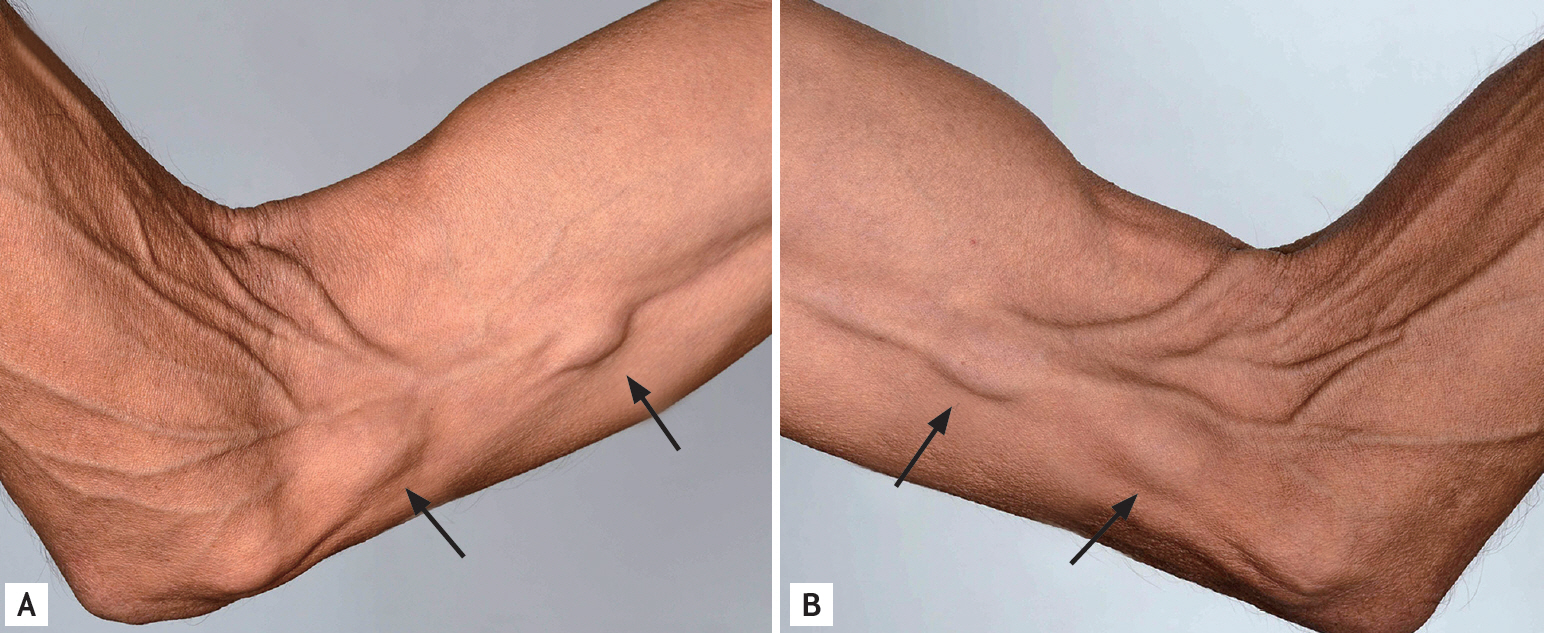Epitrochlear lymphadenopathy
Article information
A 62-year-old man with diffuse large B cell lymphoma presented with upper abdominal mass and shortness of breath. General physical examination revealed bilateral cervical, axillary, epitrochlear (Fig. 1), and inguinal lymphadenopathy. These nodes were symmetrical, large, discrete, firm, mobile, and nontender. A computed tomographic scan of the chest and abdomen showed gross left sided pleural effusion and a large lobulated lymph nodal mass in the retroperitoneum. He was started on chemotherapy using rituximab, cyclophosphamide, doxorubicin, vincristine, and prednisolone (R-CHOP).
Enlargement of epitrochlear nodes is almost always pathological and usually occurs with disorders causing generalized lymphadenopathy; such as non-Hodgkin’s lymphoma, chronic lymphocytic leukemia, human immunodeficiency virus infection, Epstein-Barr virus infection, sarcoidosis, or rarely, syphilis. It provides a useful discriminatory sign in the diagnosis of fever with lymphadenopathy.
Written informed consents were obtained.
Notes
No potential conflict of interest relevant to this article was reported.
